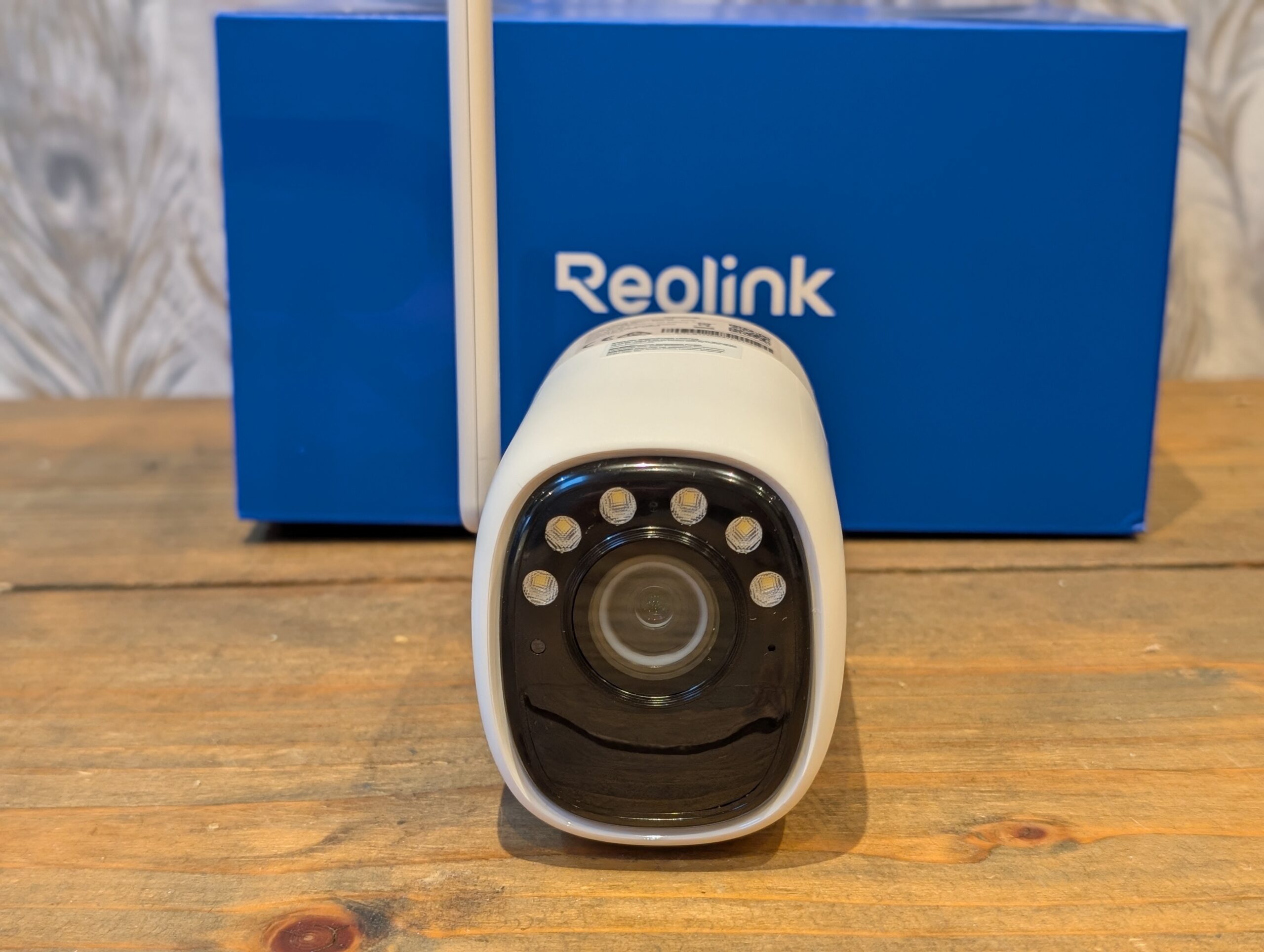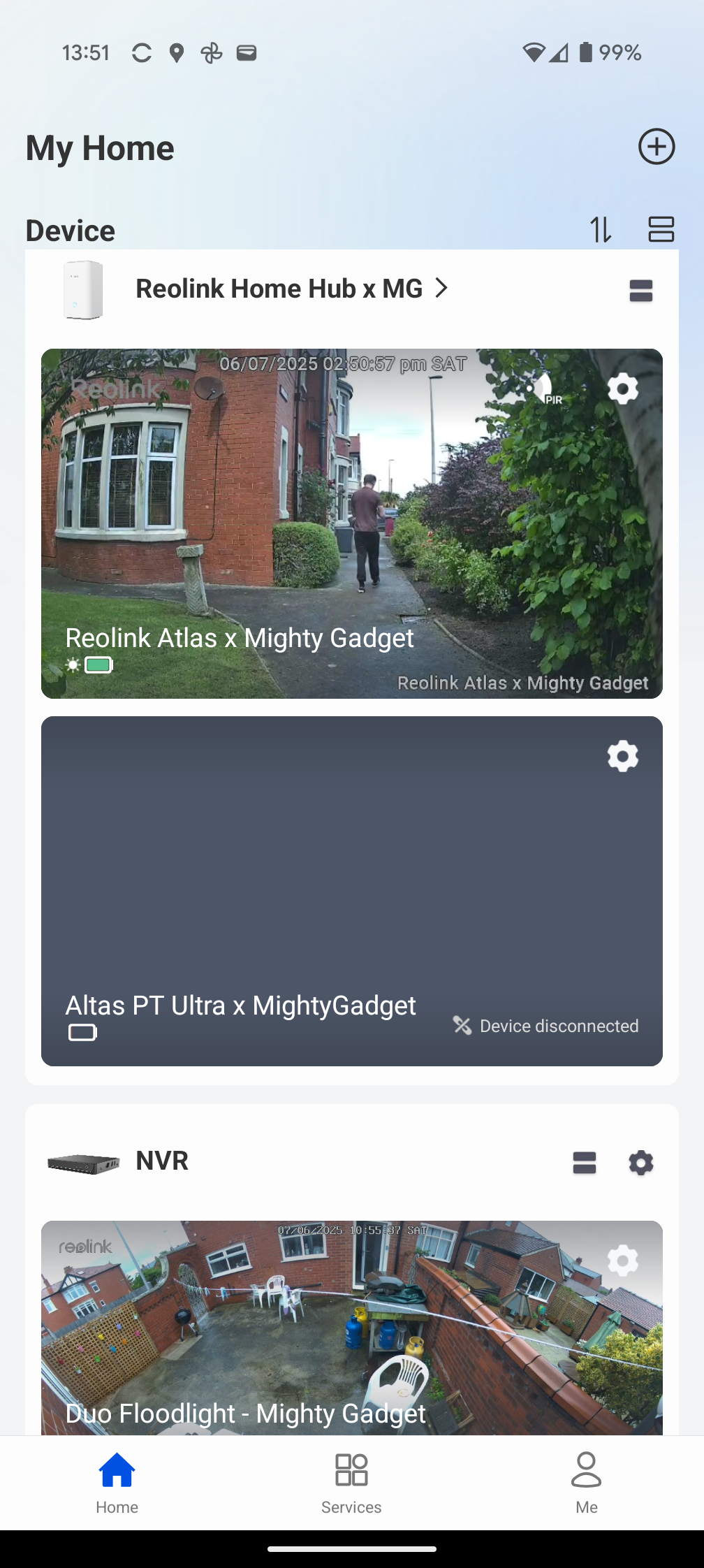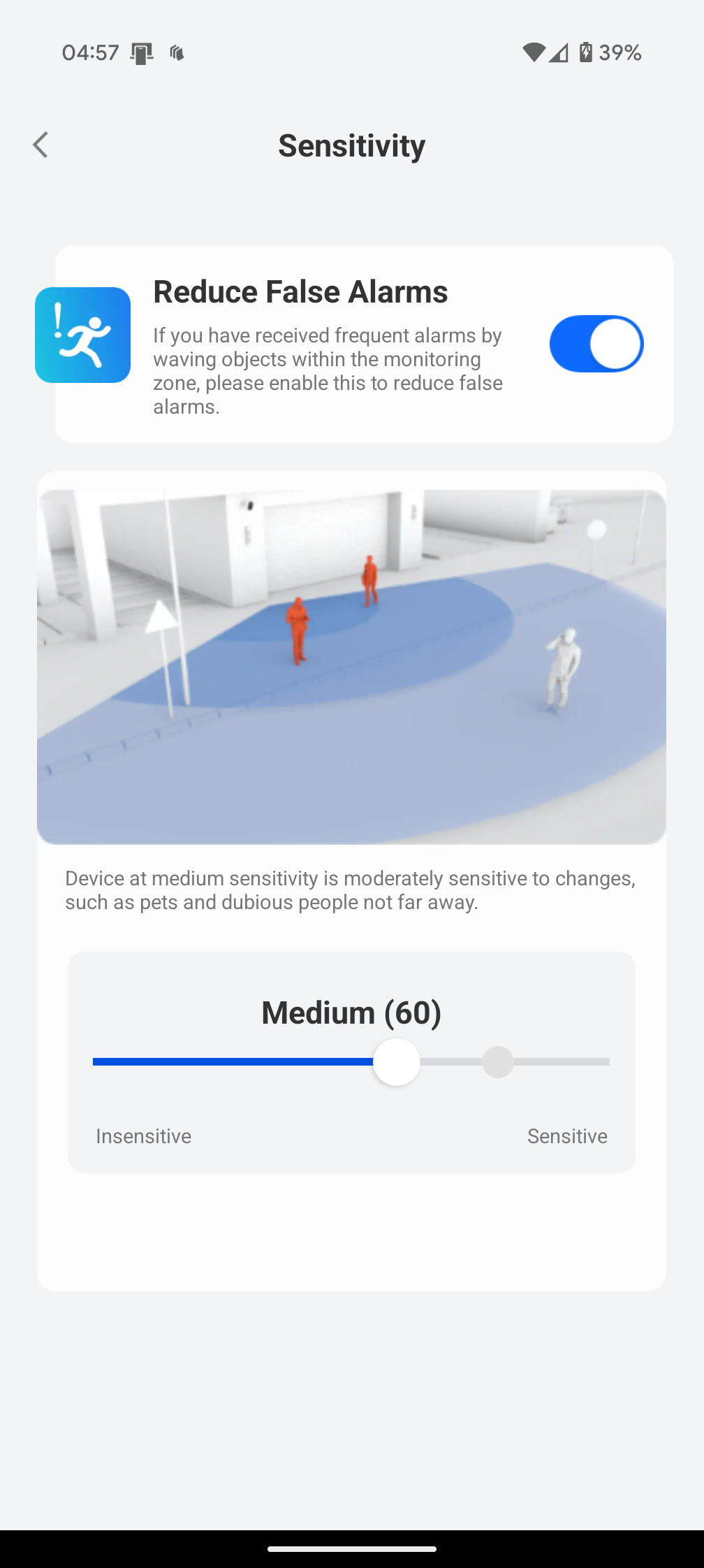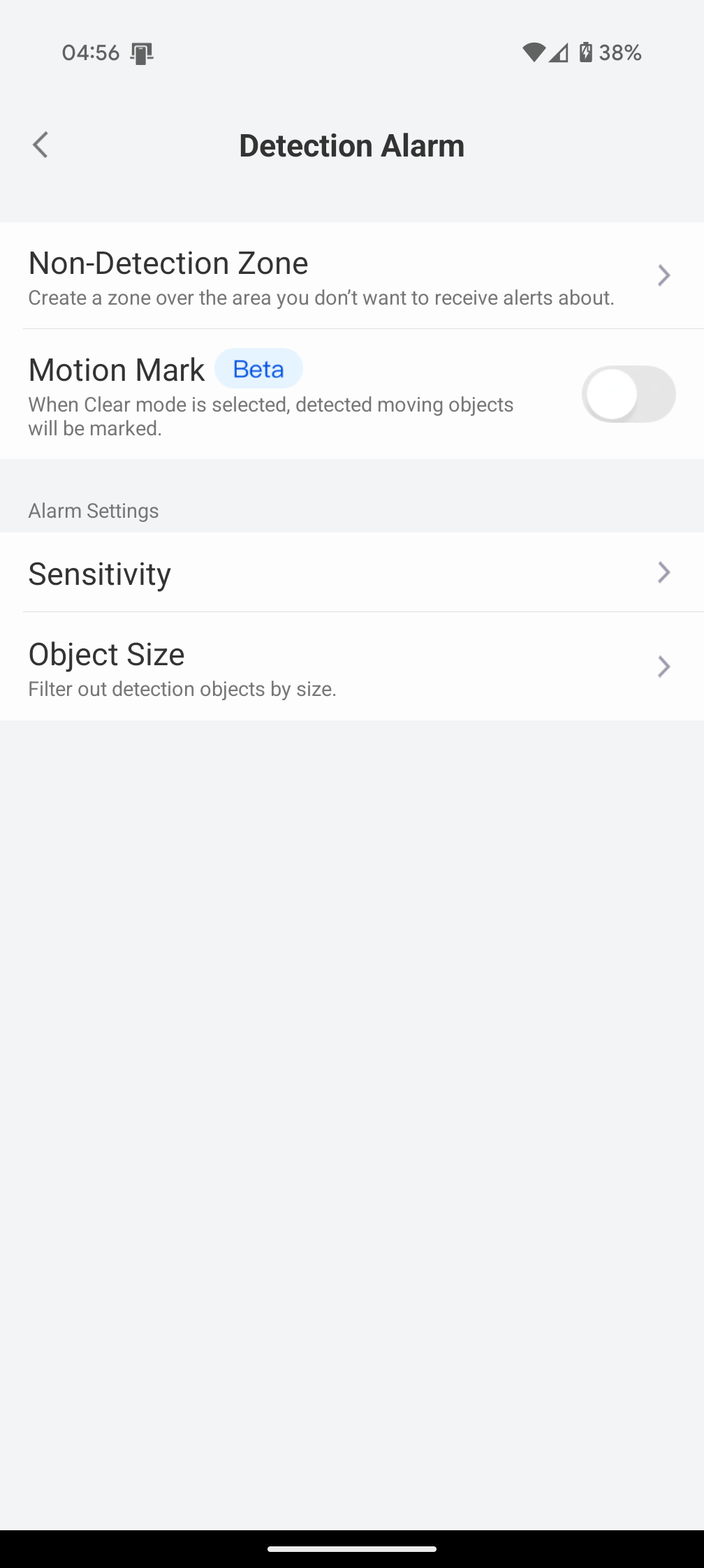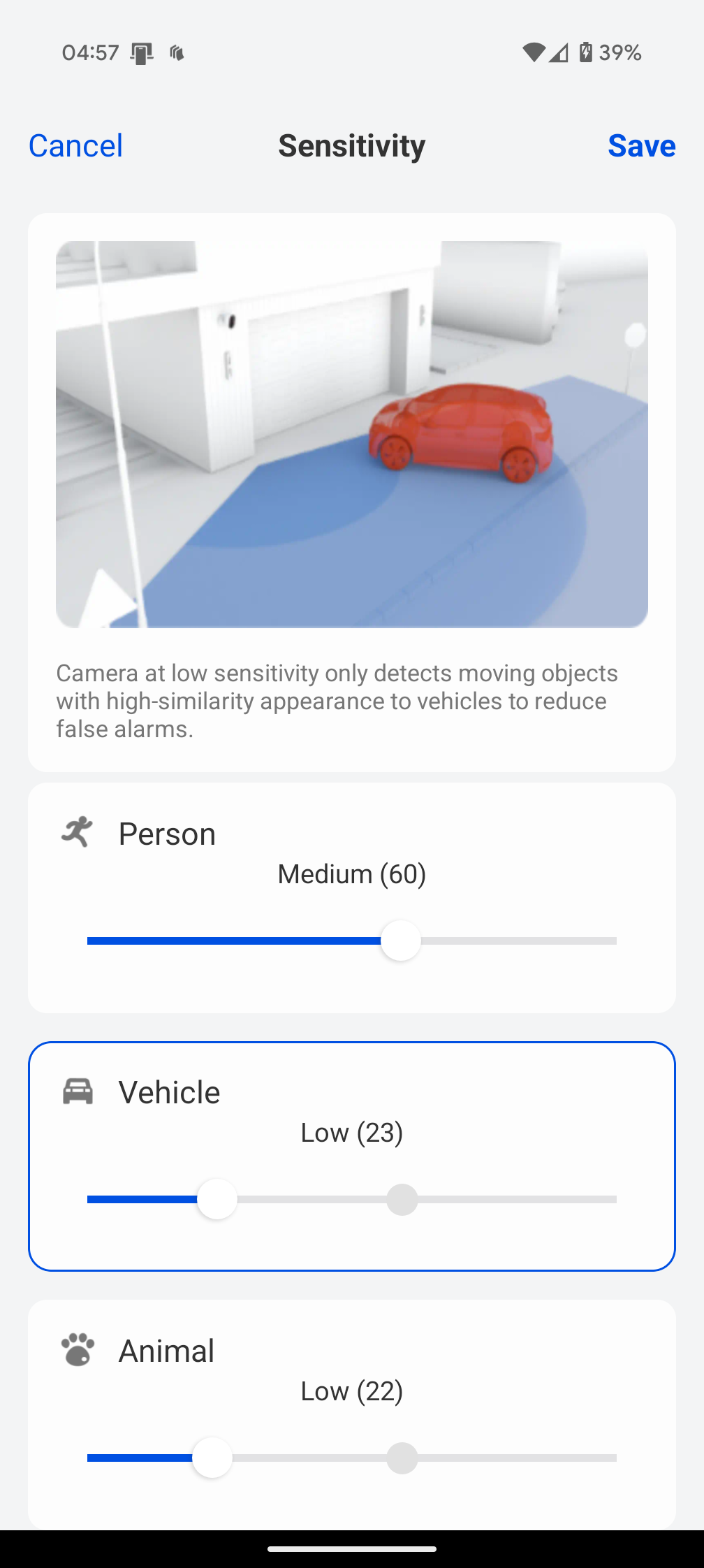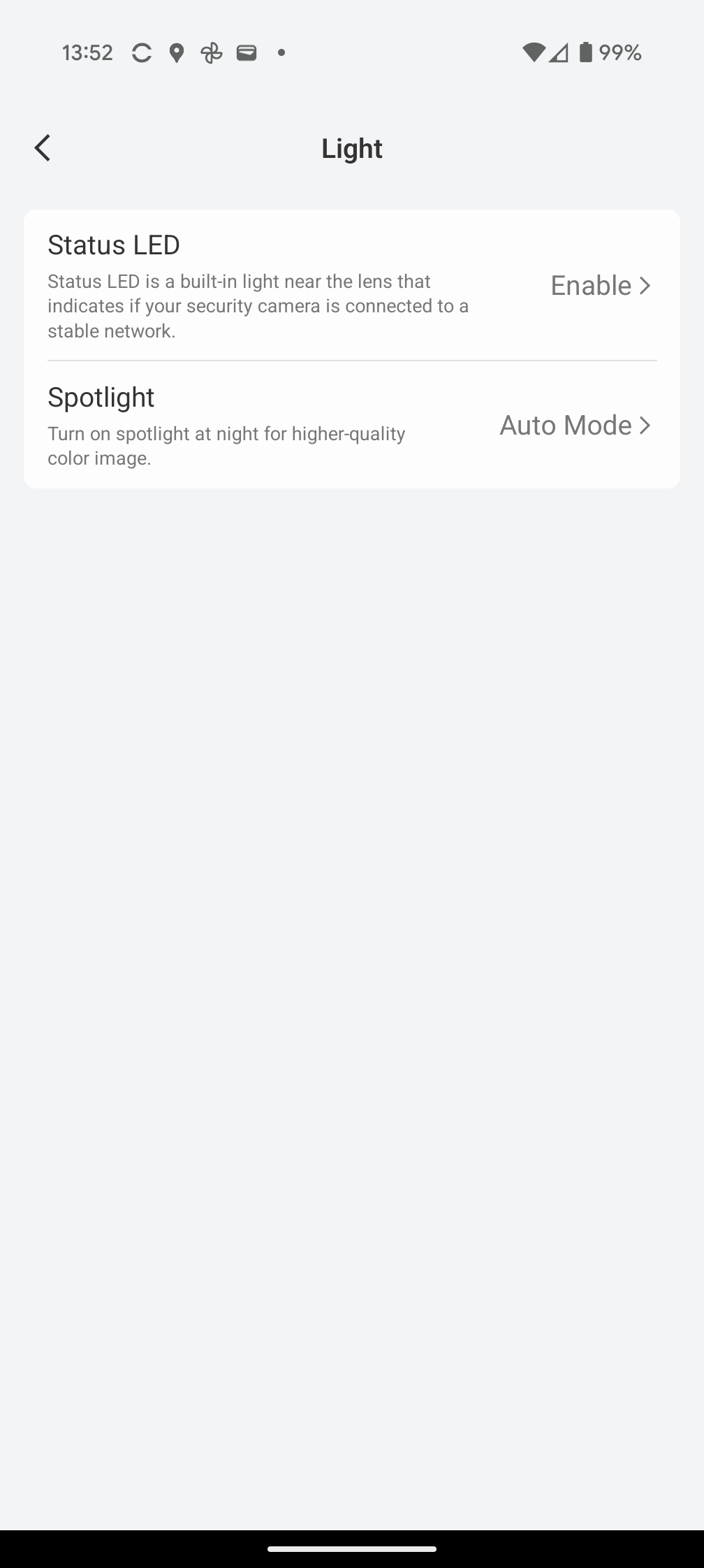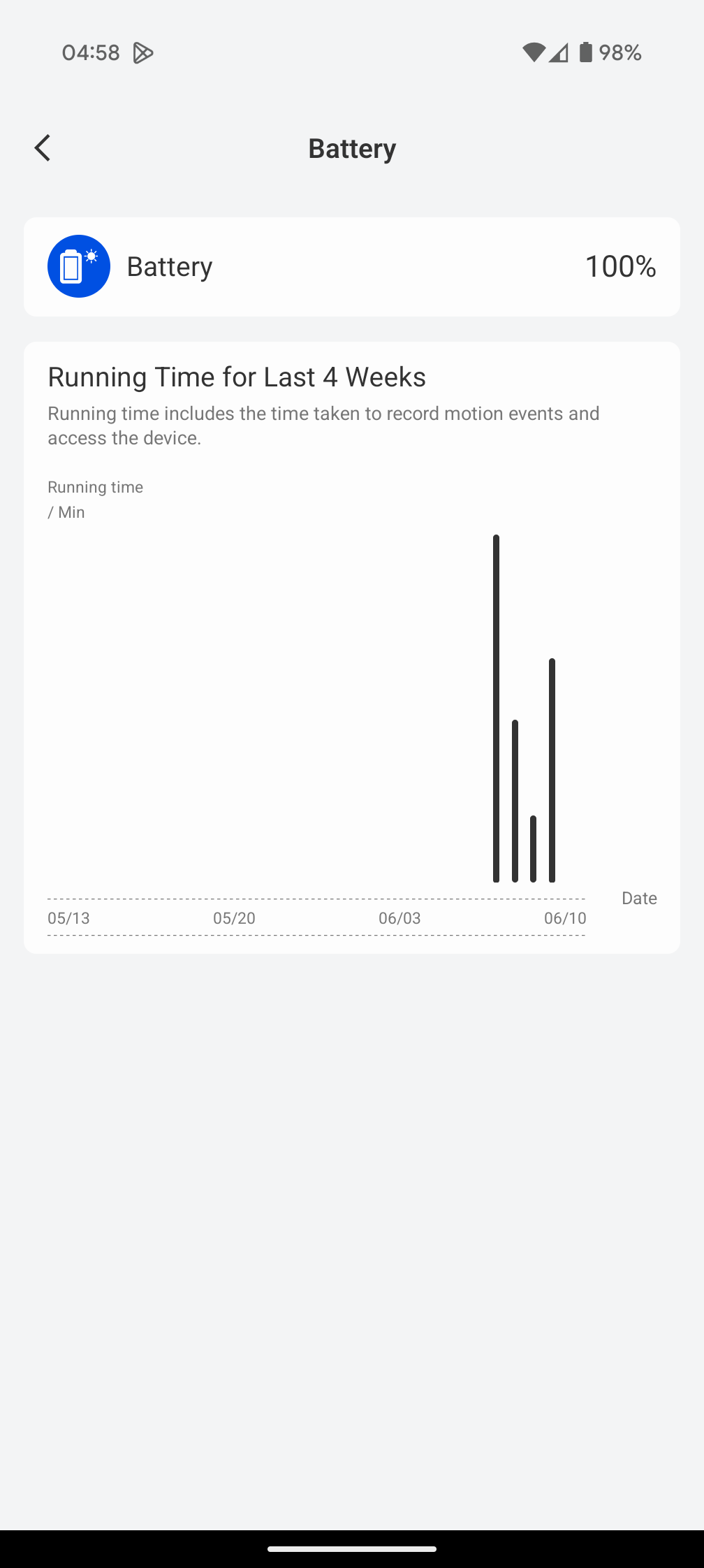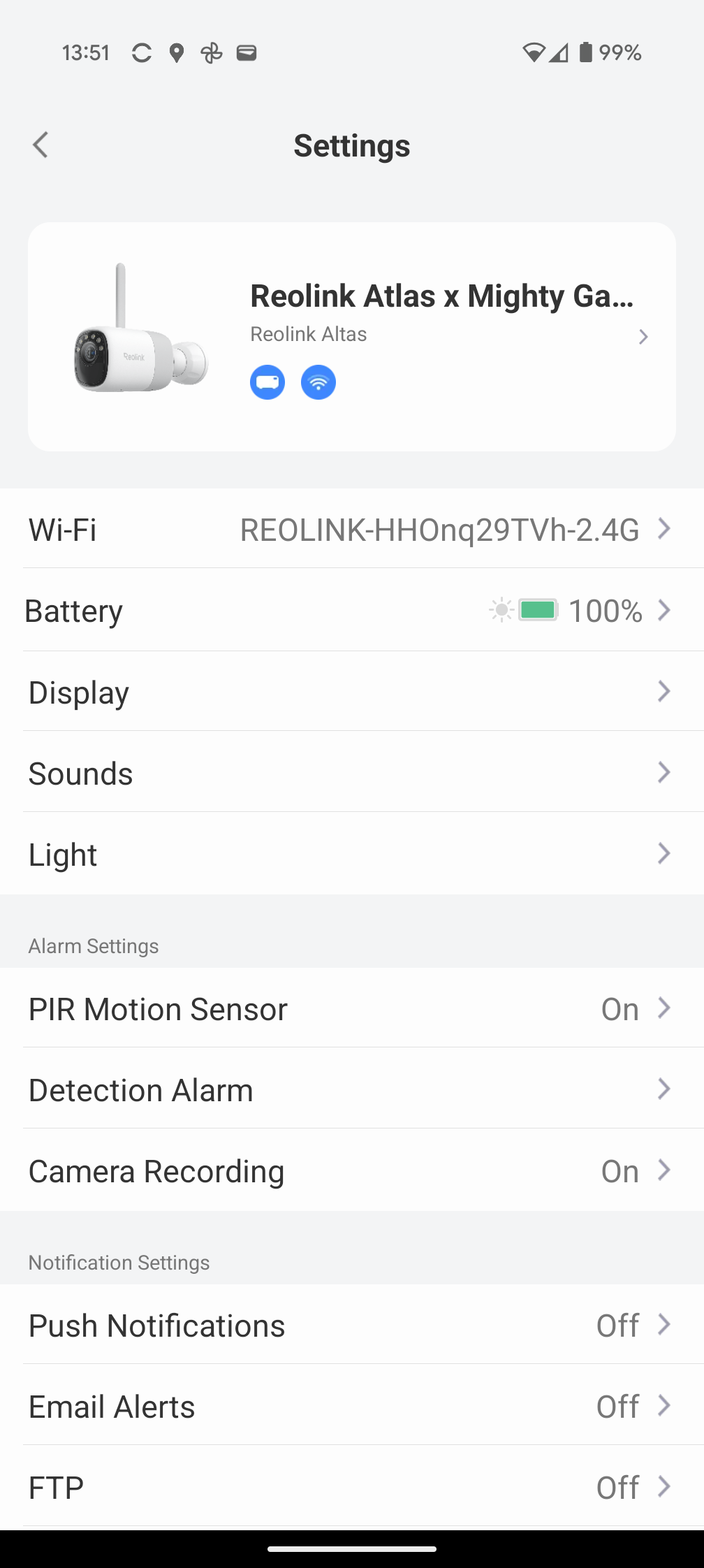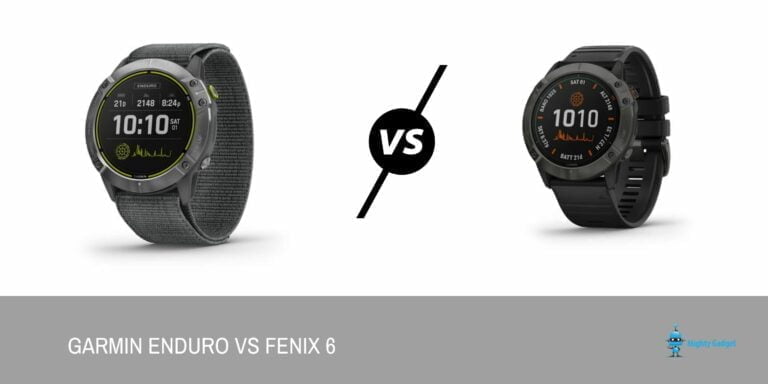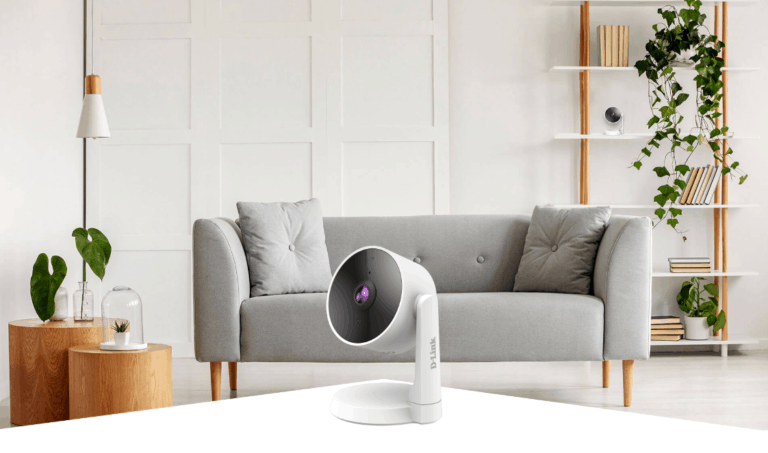Any links to online stores should be assumed to be affiliates. The company or PR agency provides all or most review samples. They have no control over my content, and I provide my honest opinion.
Reolink Altas Review
Summary
The Reolink Altas represents a well-balanced approach to battery-powered security cameras, prioritising longevity and reliability over cutting-edge features. After extensive testing, it’s clear this camera serves a specific niche in the market – users who value extended battery life and minimal maintenance above all else.
The camera excels in its core mission of providing long-term, low-maintenance security monitoring. The 20,000mAh battery genuinely delivers on Reolink’s promises, and when paired with the solar panel, it can operate indefinitely in most conditions. The ColorX night vision technology works as advertised, maintaining colour footage in conditions where traditional cameras would switch to black and white infrared.
The pre-recording feature addresses a genuine frustration with battery-powered cameras and functions reliably in practice. Being able to see the moments leading up to an event provides significantly more useful footage for security purposes. The 2K resolution, whilst not groundbreaking, provides sufficient detail for identification purposes in residential settings.
However, the Altas also highlights some areas where Reolink is falling behind competitors. The motion detection and AI classification, whilst functional, lack the sophistication of systems from companies like Eufy or Aqara. The absence of facial recognition or more advanced AI features limits its appeal for users seeking cutting-edge smart home integration.
Overall
80%-
Overall - 80%80%
Pros
Excellent battery performance, especially in motion detection mode
Effective solar charging even with suboptimal sun exposure
10-second pre-recording helps capture full event context
ColorX night vision produces colour footage in low light without spotlights
Local storage with microSD or Reolink Home Hub support
Simple setup and reliable app experience
Dual-band Wi-Fi with Wi-Fi 6 for improved connectivity
No ongoing subscription costs
Cons
Motion detection, while decent, lacks facial recognition
2K resolution is good, but falls short of competing 4K models
No pan or tilt functionality
I have previously reviewed the very impressive Reolink Altas PT Ultra, which is a pan and tilt camera with a 4K sensor that can capture true colour night footage.
As amazing as it is, the pan-tilt design with auto-tracking inevitably requires a lot of power. Reolink did their best to overcome this problem by using a massive 20,000mAh battery, and it was compatible with a Reolink solar panel.
However, as I live in the north of the UK, we don’t get much sun, and my home is poorly positioned for solar. With the settings dialled up a bit, I only achieved around 8 weeks of usage. Of course, if you dial down the settings and have good sun exposure, you’d get much better performance and may never need to charge the camera.
The new Reolink Altas is more basic; it omits the pan-tilt functionality and reduces the resolution down to 2K 4MP (2560 x 1440) but retains other features like the ColorX low light sensor.
Related Reviews
- SwitchBot Lock Ultra Vision Combo Review
- Aqara Camera Hub G5 Pro PoE Review
- EufyCam S3 Pro Review
- Reolink Battery Doorbell Review
- Imilab EC6 Dual 2K WiFi Plug-in Spotlight Camera Review
- Reolink CX810 Review
- AOSU C9C-4H SolarCam D1 Classic Kit Review
- Reolink Argus 4 Pro Review
Specification
Video & Audio Specifications
| Specification | Details |
| Image Sensor | 1/1.8″ CMOS sensor |
| Resolution | 2560 × 1440 (4 megapixels) |
| Lens | f=4mm, fixed |
| Video Compression | H.264/H.265 |
| Field of View | Diagonal: 110°; Horizontal: 90°; Vertical: 50° |
| Infrared Night Vision | N/A |
| Color Night Vision | Yes (ColorX technology) |
| Frame Rate | Up to 15fps |
| Audio | Two-way audio with built-in microphone and speaker |
Power Specifications
| Specification | Details |
| Battery Capacity | 20,000mAh rechargeable battery |
| Battery Life (Motion Detection) | Up to 18 months (540 days) with 300s recording per day |
| Battery Life (Continuous) | 1fps: Approximately 28 days per charge |
| Solar Panel Compatibility | Reolink Solar Panel 2 (6W) |
| Solar Charging Requirements | Motion Detection: ~10 minutes sunlight daily Continuous 1fps: ~30 minutes sunlight daily Continuous 3fps: ~60 minutes sunlight daily Continuous 5fps: ~120 minutes sunlight daily |
Interface & Connectivity
| Specification | Details |
| Power Port | USB Type-C (supports USB-A to USB-C cables only) |
| Storage | microSD card slot (supports up to 512GB) |
| Reset Button | Yes |
| Wireless Standard | IEEE 802.11 a/b/g/n/ac/ax (Wi-Fi 6) |
| Operating Frequency | 2.4GHz / 5GHz dual-band |
| Wireless Security | WPA/WPA2/WPA3 |
| Bluetooth | Bluetooth V5.0 |
Software & Features
| Specification | Details |
| Supported OS | PC: Windows, macOS; Mobile: iOS, Android |
| Protocols | SSL, TCP/IP, UDP, UPNP, SMTP, NTP, P2P |
| User Access | Max 12 simultaneous streams (2 main & 10 sub streams) |
| Pre-recording | 2-20 seconds (10s default), adjustable frame rates 1/3/5fps |
| PIR Detection Range | Up to 10m (33ft), 100° horizontal |
| Recording Modes | Continuous recording, motion-triggered, pre-recording |
| AI Detection | Person, vehicle, and animal detection |
| Smart Home Integration | Google Assistant, Alexa compatible |
| Cloud Storage | Reolink Cloud (available in selected countries) |
Environmental & Physical
| Specification | Details |
| Operating Temperature | -20°C to 55°C (-4°F to 131°F) |
| Operating Humidity | 20% to 85% |
| Weatherproof Rating | IP66 |
| Dimensions | 126 × 78 × 76mm |
| Weight | 554g |
| Warranty | 2-year limited warranty |
Features
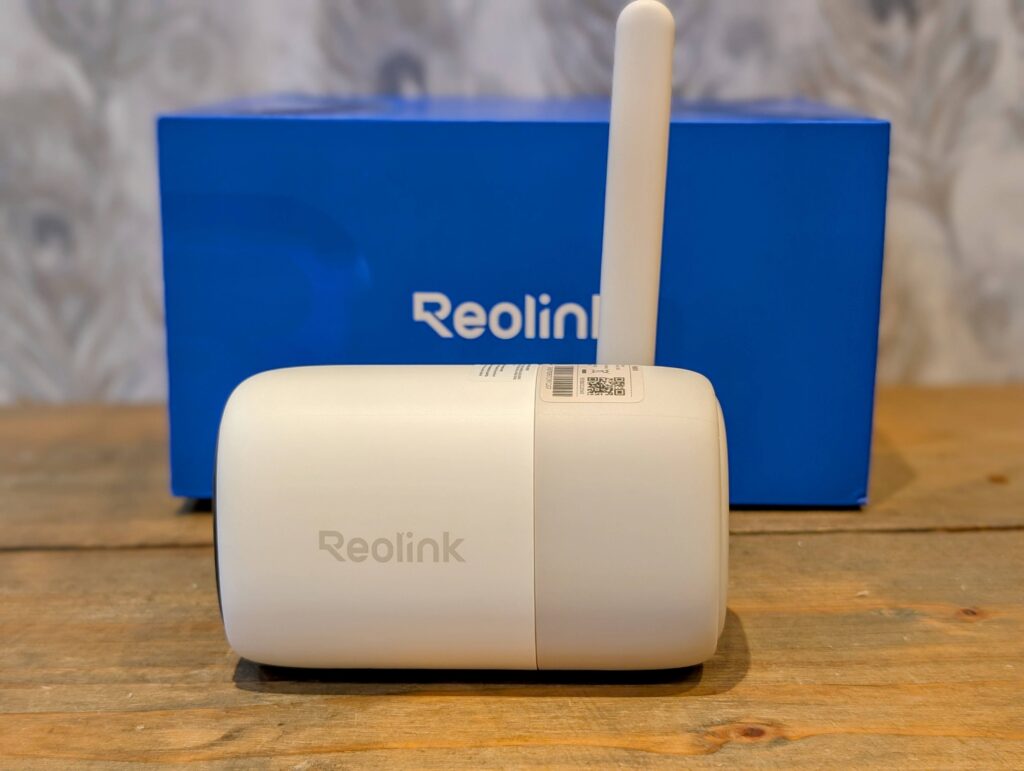
Video Recording and Image Quality
The camera utilises a 1/1.8-inch CMOS sensor capable of recording at 2560×1440 resolution (4 megapixels), delivering 2K quality footage. The device supports both H.264 and H.265 video compression formats, which helps manage storage requirements whilst maintaining image quality. The camera operates at frame rates up to 15fps, with adjustable settings of 1, 3, or 5fps depending on power consumption requirements.
The field of view covers 110° diagonally, 90° horizontally, and 50° vertically, providing comprehensive area coverage. The fixed focal length lens measures 4mm with an F1.0 aperture, designed to maximise light gathering capability.
Night Vision Technology
The Altas incorporates ColorX night vision technology, which differs from traditional infrared systems. This technology combines the F1.0 aperture with the 1/1.8-inch sensor to capture colour images in low-light conditions without requiring infrared illumination. The system includes six integrated spotlights that can operate automatically based on ambient light conditions.
Pre-Recording Capability
A distinctive feature is the pre-recording function, which captures footage for 2-10 seconds before motion detection triggers. This addresses the common issue where traditional PIR sensors may miss the initial moments of an event. The pre-recording duration is adjustable, with a default setting of 10 seconds.
Power Management and Battery Life
The camera houses a 20,000mAh rechargeable battery, which represents a substantial capacity compared to typical battery-powered security cameras. Under standard motion detection mode (recording 300 seconds per day), the battery can provide up to 540 days of operation. For continuous recording scenarios, battery life varies based on frame rate settings:
- 1fps: approximately 28 days
- 3fps: approximately 14 days
- 5fps: approximately 8 days
The device supports solar charging through an optional 6W Reolink Solar Panel 2. For motion detection mode, approximately 10 minutes of daily sunlight maintains operation, whilst continuous recording requires 30-120 minutes depending on frame rate settings.
Connectivity and Network Features
The Altas supports Wi-Fi 6 (IEEE 802.11ax) with dual-band 2.4GHz and 5GHz operation. Security protocols include WPA, WPA2, and WPA3 encryption standards. The device can handle up to 12 simultaneous streams (2 main and 10 sub-streams).
Bluetooth 5.0 connectivity is included for setup and configuration purposes. The camera integrates with Google Assistant and Amazon Alexa for voice control functionality.
Detection and Alert Systems
The PIR motion sensor has an adjustable detection range up to 10 metres with 100° horizontal coverage. The device includes on-device artificial intelligence for detecting people, vehicles, and animals, which helps reduce false alerts. Two-way audio communication is supported through built-in microphone and speaker components.
Storage Options
Local storage supports microSD cards up to 512GB capacity. The camera is compatible with Reolink’s Home Hub and Home Hub Pro systems for centralised storage management. Cloud storage is available through Reolink Cloud services in supported regions.
Physical Design and Durability
The camera measures 126×78×76mm and weighs 554g. The bullet-style housing carries an IP66 weatherproof rating for outdoor installation. Operating temperature range spans -20°C to 55°C, with humidity tolerance of 20-85%.
Power connection uses a USB Type-C port, compatible specifically with USB-A to USB-C cables. The design allows for wall or ceiling mounting without requiring mains power access.
Software and Management
The device operates through the Reolink mobile application for iOS and Android, plus desktop clients for Windows and macOS. Time-lapse recording functionality is included for creating compressed footage of extended periods. The camera supports various recording modes including continuous, motion-triggered, and scheduled recording.
The manufacturer provides a two-year limited warranty with the product.
Unboxing
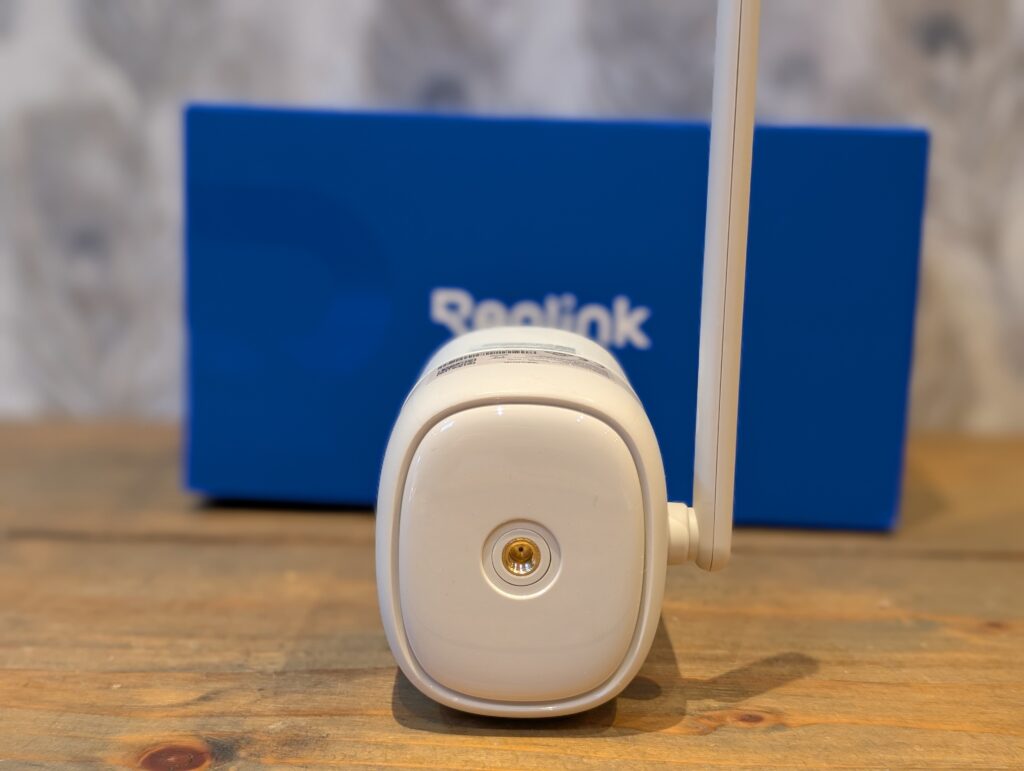
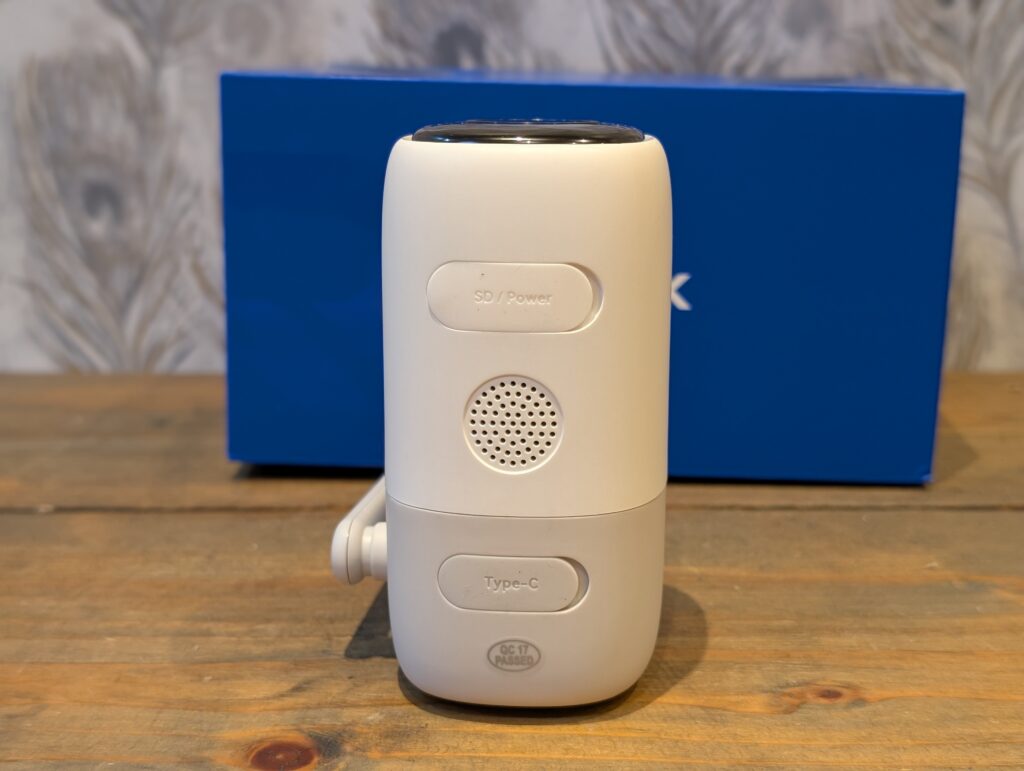
The Altas adopts a different design from the previous battery-powered camera; it is not more bullet-shaped with a horizontal layout, rather than the vertical design of cameras like the Reolink Argus 2Eand Argus 3 Ultra.
The packaging includes the camera unit, mounting hardware, a USB-C charging cable, and comprehensive documentation.
Reolink stands out from the crowd with the mounting options as you also get straps allowing you to easily mount this on poles or tree branches.
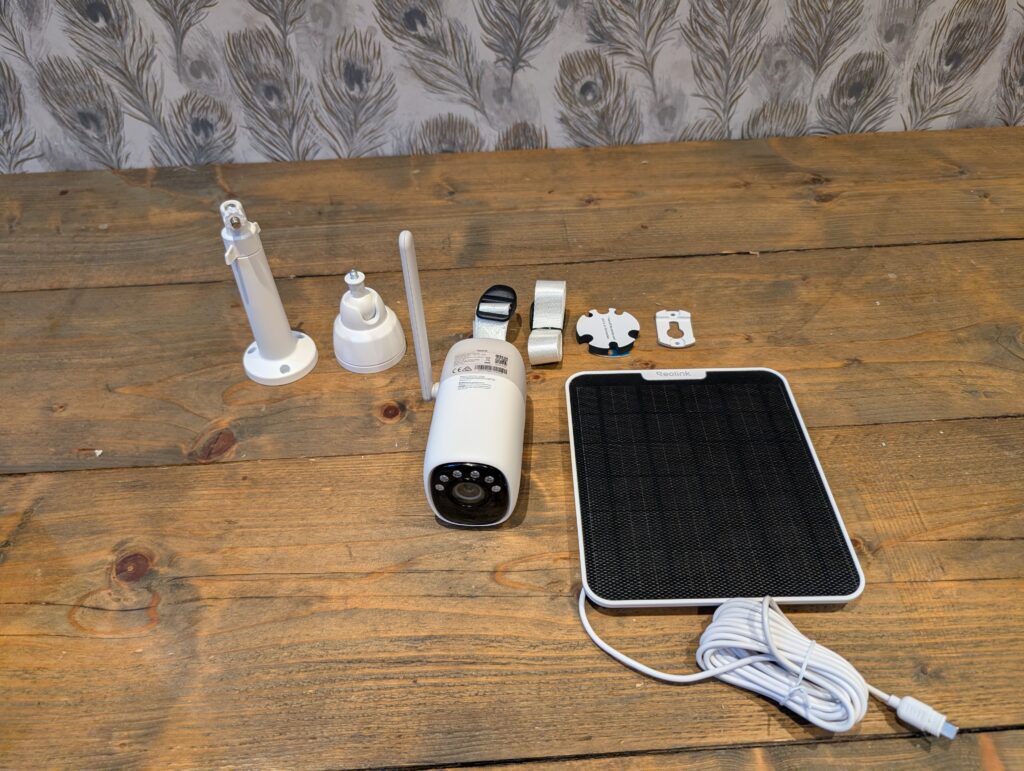
The build quality feels solid, with a substantial weight that reflects the large internal battery. The white finish should blend well with most exterior colour schemes.
You then get a sizeable external antenna, which many of the older cameras lack. This external antenna should provide better wireless reception compared to internal antenna designs, particularly useful for installations at the edge of Wi-Fi coverage areas.
The mounting bracket is well-designed and allows for adjustment of the camera angle once installed. The included screws and wall plugs should be suitable for most installation scenarios, though users may want to upgrade to more robust fixings for particularly exposed locations.
Set Up
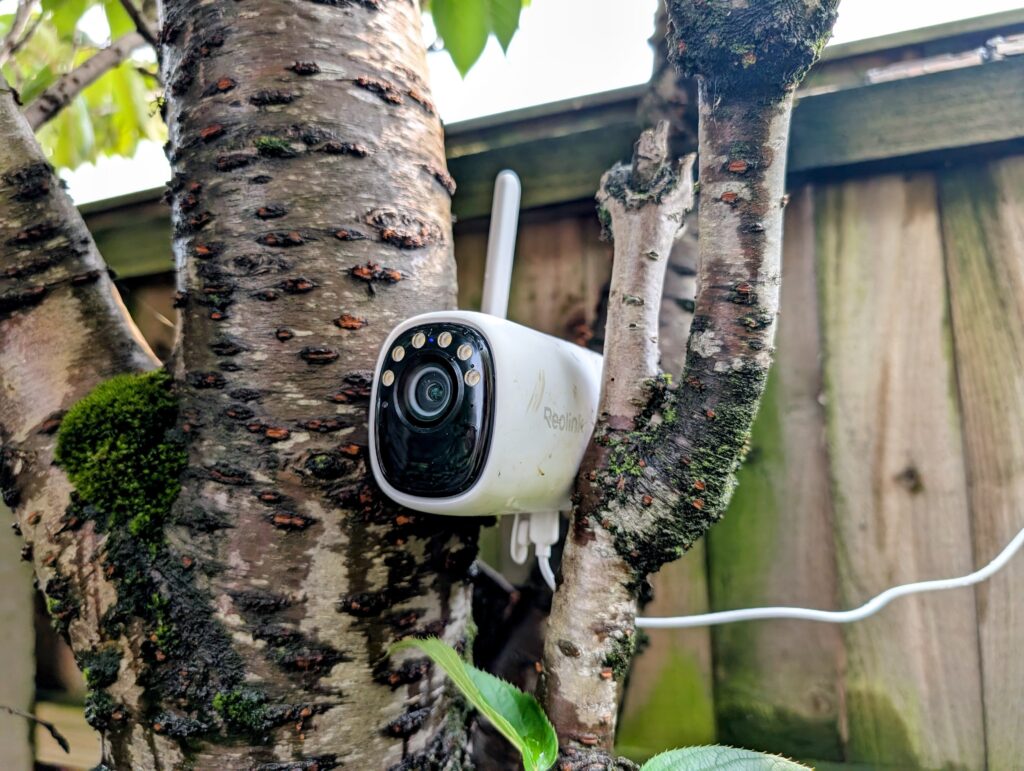
The set-up is identical to all Reolink cameras. With the camera powered up, you scan the code, and it connects and passes over your WiFi details via Bluetooth.
This camera features WiFi 6 and can be used with either the 2.4GHz or 5GHz band. If you can get a good signal, the 5GHz band will allow the camera to be much more responsive when connecting to feeds and downloading footage.
For me, I set the camera up wedged in a tree set away from my house, where the WiFi signal is oddly poor, as I have an access point in the bay window where the camera faces. I struggled with both 2.4GHz and 5GHz but my phone was also dropping connection, so this was not a fault of the camera.
I then decided to set the camera up with the Reolink Home Hub, and it connected perfectly. With this, the camera records to the storage on the home hub rather than the camera itself – which is preferable as you have less risk of someone stealing the camera and its footage. The signal to the hub has worked perfectly well, connecting to a stream takes around 1 or 2 seconds.
Reolink App and Settings
I have used the Reolink app for several years now, so I am quite familiar with it and there is not much different with this camera.
The app interface remains clean and intuitive, with logical menu structures that make it easy to access different functions. Live viewing is responsive, and the app provides good control over recording settings, detection zones, and notification preferences.
One area where the app could improve is in the playback experience. Scrubbing through recorded footage can be somewhat clunky compared to some competitors, and the timeline interface could be more refined. However, the basic functionality works well, and the app is stable and reliable in daily use.
The app supports multiple user accounts, allowing family members to access cameras with different permission levels. Push notifications are timely and include thumbnail images, making it easy to quickly assess whether an alert requires attention.
Motion Detection
The motion detection appears to be the same standard as most of the previous Reolink cameras I have reviewed. It is good but not great, and they are falling behind other companies like Eufy and Aqara, which have facial recognition.
The PIR sensor provides reliable motion detection within its specified range, but the AI classification system, while functional, lacks the sophistication of some competitors. The system can distinguish between people, vehicles, and animals with reasonable accuracy, but it doesn’t offer more advanced features like facial recognition or package detection.
Detection sensitivity can be adjusted, and users can define custom detection zones to focus monitoring on specific areas. This helps reduce false alerts from areas like busy roads or swaying vegetation. The system works well for basic security monitoring but may not satisfy users looking for more advanced AI features.
The one nice feature is the pre-recording, which allows you to pre-record a motion event by 10 seconds. This is handy as in the past I have found a lot of cameras like this would trigger an event, and you’d only catch a glimpse of the person if they were moving quickly.
With the pre-recording, it records footage at a very slow frame rate with the option to choose 1, 3 or 5 FPS, with 3 FPS being the default.
As I have been using a solar panel with this, I haven’t noticed an obvious impact on battery life, and the camera is still reporting 100%, but it would likely reduce the battery life, and the higher the FPS, the higher the drain.
The pre-recording feature addresses one of the most common complaints about battery-powered security cameras. Traditional systems often miss the crucial moments leading up to an event because they only start recording after motion is detected. The Altas solves this by maintaining a continuous buffer, though at a reduced frame rate to manage power consumption.
Day Time Video Quality
Footage captured during the day is good, which is true for most cameras nowadays. Of course, it could be better – if it were 4K like the Altas PT Ultra, you’d get greater detail, but I don’t really need cinema quality footage from a security camera, I just need to be able to identify who has entered my garden.
The 2K resolution provides sufficient detail for most security applications. Colours are accurate and well-saturated, and the image remains sharp across the frame. The fixed focus lens works well for the typical distances encountered in residential security applications.
In bright conditions, the camera handles high contrast scenes reasonably well, though it can struggle with extreme backlighting situations. The automatic exposure system generally produces well-balanced images, though manual controls would be welcome for users who want more precise control over image settings.
The wide field of view captures a good area without significant distortion at the edges, making it suitable for monitoring larger spaces like driveways or garden areas.
Night Time / Low Light Video Quality
One of the main selling points of the Altas cameras is the use of the ColorX Night Vision. It features an F1.0 aperture and a 1/1.8″ sensor, capturing 2X more light than standard F1.6+1/2.7″ cameras, which allows it to produce colour footage in very low light.
In my scenario, we have stupidly bright street lights, so it doesn’t take much for a camera to produce colour footage in the first place. Where I placed the camera was quite sheltered, with the tree it was placed on providing shade from some of the street lighting.
The ColorX technology performs impressively in low-light conditions. The large aperture and sensor combination allows the camera to maintain colour footage in situations where traditional cameras would switch to black and white infrared mode. This provides more useful footage for identification purposes, as clothing colours and other details remain visible.
In my sample footage, the camera does have quite a bit of overexposure with the street lights, but I think that would happen to most cameras with similar specs.
When ambient light levels drop too low for natural colour recording, the camera activates its built-in LED spotlights. These provide sufficient illumination for the sensor to continue recording in colour, though they may cause some glare from reflective surfaces or in wet conditions.
The absence of traditional infrared night vision means the camera relies entirely on ambient light and its LED spotlights for night recording. This approach works well in most residential settings but may be limiting in completely dark rural locations.
The night vision quality is genuinely impressive for a battery-powered camera. The ability to maintain colour footage provides significant advantages for identifying individuals and vehicles compared to traditional black and white infrared systems.
Battery Life
Reolink claims this camera can do 540 days in Motion Sensor Trigger Mode (based on 5 minutes of daily recording) without needing a recharge, perfect for harsh winters or extended periods without sunlight.
In my scenario, I used the camera with a solar panel throughout my review process, but the solar panel was in a terrible position as it was angled in a poor direction and had a lot of tree coverage.
The weather recently has been inclement, with more rainy, overcast days than sunny.
Initially, I didn’t have pre-recording enabled, and the default post-recording length was 8 seconds. After a week of use, the battery was still at 100%.
I later enabled pre-recording and extended post-recording to 15 seconds. The weather had improved by this point, with several sunny days in a row, and after a week of use, it was still at 100%.
For future testing, I will disconnect the solar panel and see what the battery drain is like then.
For context, these small solar panels can be highly effective. I have not charged the EufyCam S3 Pro since reviewing it back in November. It is reporting 204 days of use and it is still at 100%
Price & Alternative Options
The Reolink Altas has a recommended retail price (RRP) of £140, and at the time of writing, it was available for £126.
The Reolink Altas PT Ultra has an RRP of £200 but is available for £142.
The Argus 4 Pro is another great camera. It is a dual-lens camera providing a 180° field of view. It is basically like the Altas with two cameras. This has an RRP of £200 and is discounted to £154.
Alternative Options
For competing options, the two main alternative brands I’d consider are Eufy and Arlo. I favour Eufy due to the lack of monthly subscriptions, just like Reolink:
Eufy Security SoloCam S220 – £75 RRP – Available for £50
- Pros: Much cheaper, built-in solar panel, built-in storage, so no need for microSD. Superior motion detection
- Cons: Not true colour night vision/lower quality footage, no 5 GHz, I found the SoloCams don’t have as good a battery as the HomeBase models, built-in storage limits you to 8GB.
Eufy Security SoloCam S230 – £130 RRP – Available for £89
- Basically the same as the above but with a higher aperture camera sensor and a built in spotlight to produce colour night footage, but this won’t be as good as the true night colour footage of the Reolink.
Eufy Security SoloCam E30 – RRP of £130 – Available for £104
- Pros: Cheaper, 360° Pan & Tilt, built-in solar panel. Superior motion detection (facial recognition when connected to HomeBase S380
- Cons: Not true colour night vision/lower quality footage, no 5 GHz. The battery is almost certainly worse than the other recommendations.
For context, my preferred battery-powered camera is the Eufy Security eufyCam S3 Pro, which is a two-camera pack with homebase included but costs around £500.
Overall
I think the Reolink Altas is an excellent camera, and it works well for my particular situation.
Depending on how you look at it, it either slot in nicely as a more affordable and energy-efficient camera vs the Altas PT Ultra and Argus 4 Pro. An alternative point of view would be that it struggles to stand out, as the other two models offer significantly superior features for around £20 more.
For me, the only reason why I’d buy the Reolink Altas over the other two models is for the significantly better battery life. That is something I place a great deal of value in. I have ADHD and work very long hours, I am constantly forgetting to charge my cameras. The Altas PT Ultra was out of battery for weeks before I swapped it out with this new Altas.
Overall, I think the Reolink Altas is a decent addition to the Reolink range, and I would say this is best suited for homes that struggle to get enough sun exposure to keep the more advanced models running for long periods.
Reolink Altas Review
Summary
The Reolink Altas represents a well-balanced approach to battery-powered security cameras, prioritising longevity and reliability over cutting-edge features. After extensive testing, it’s clear this camera serves a specific niche in the market – users who value extended battery life and minimal maintenance above all else.
The camera excels in its core mission of providing long-term, low-maintenance security monitoring. The 20,000mAh battery genuinely delivers on Reolink’s promises, and when paired with the solar panel, it can operate indefinitely in most conditions. The ColorX night vision technology works as advertised, maintaining colour footage in conditions where traditional cameras would switch to black and white infrared.
The pre-recording feature addresses a genuine frustration with battery-powered cameras and functions reliably in practice. Being able to see the moments leading up to an event provides significantly more useful footage for security purposes. The 2K resolution, whilst not groundbreaking, provides sufficient detail for identification purposes in residential settings.
However, the Altas also highlights some areas where Reolink is falling behind competitors. The motion detection and AI classification, whilst functional, lack the sophistication of systems from companies like Eufy or Aqara. The absence of facial recognition or more advanced AI features limits its appeal for users seeking cutting-edge smart home integration.
Overall
80%-
Overall - 80%80%
Pros
Excellent battery performance, especially in motion detection mode
Effective solar charging even with suboptimal sun exposure
10-second pre-recording helps capture full event context
ColorX night vision produces colour footage in low light without spotlights
Local storage with microSD or Reolink Home Hub support
Simple setup and reliable app experience
Dual-band Wi-Fi with Wi-Fi 6 for improved connectivity
No ongoing subscription costs
Cons
Motion detection, while decent, lacks facial recognition
2K resolution is good, but falls short of competing 4K models
No pan or tilt functionality

